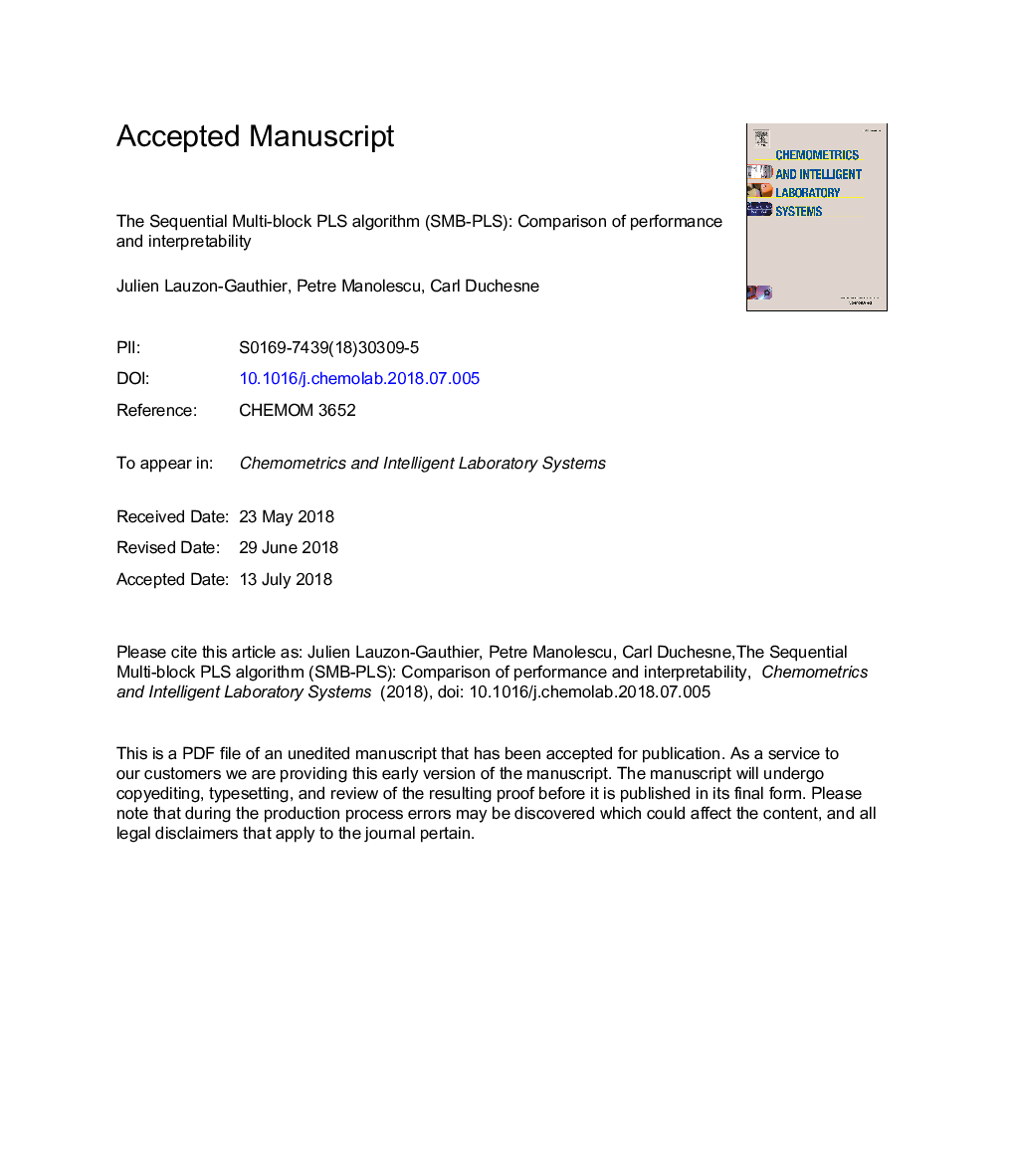| Article ID | Journal | Published Year | Pages | File Type |
|---|---|---|---|---|
| 7561817 | Chemometrics and Intelligent Laboratory Systems | 2018 | 51 Pages |
Abstract
The Sequential Multi-block PLS algorithm, called SMB-PLS, was recently proposed to improve interpretability of large multi-block data structures. It combines the strengths of Multi-block PLS (MB-PLS) and those of the Sequential Orthogonal PLS (SO-PLS) methods. It uses the two-level hierarchical structure of the first (i.e., block and super levels) providing two levels of scrutiny for the analysis of large datasets, and the sequential orthogonalization scheme of SO-PLS, while keeping between block correlated information in the model. This enables the exploration and interpretation of the full data structure without loss of information. SMB-PLS also allows the selection of a different number of latent variables for each regressor block. The modelling performance and interpretation of SMB-PLS were illustrated using two datasets, covering different types of structural relationships between the regressor blocks. SMB-PLS leads to similar predictive performance of response data as MB-PLS and SO-PLS. However, it was shown that SMB-PLS clearly reveals the correlation structure between the regressor blocks, while MB-PLS leads to more ambiguous results. The correlated information between the blocks extracted with SMB-PLS also improves interpretability, for example, by identifying control actions made to attenuate disturbances, such as raw materials variations. Such information cannot be obtained with SO-PLS since it removes between block correlated variations.
Related Topics
Physical Sciences and Engineering
Chemistry
Analytical Chemistry
Authors
Julien Lauzon-Gauthier, Petre Manolescu, Carl Duchesne,
